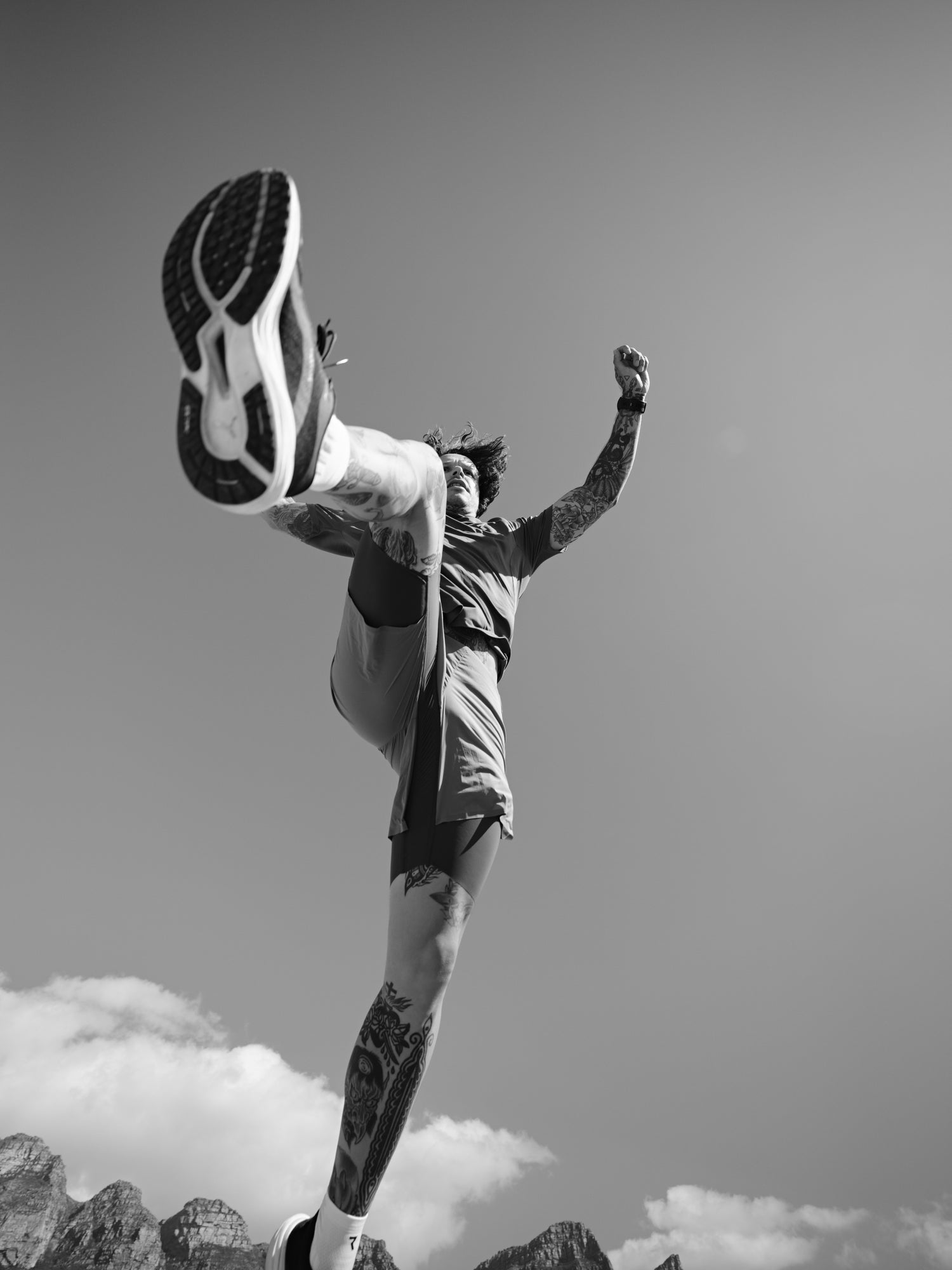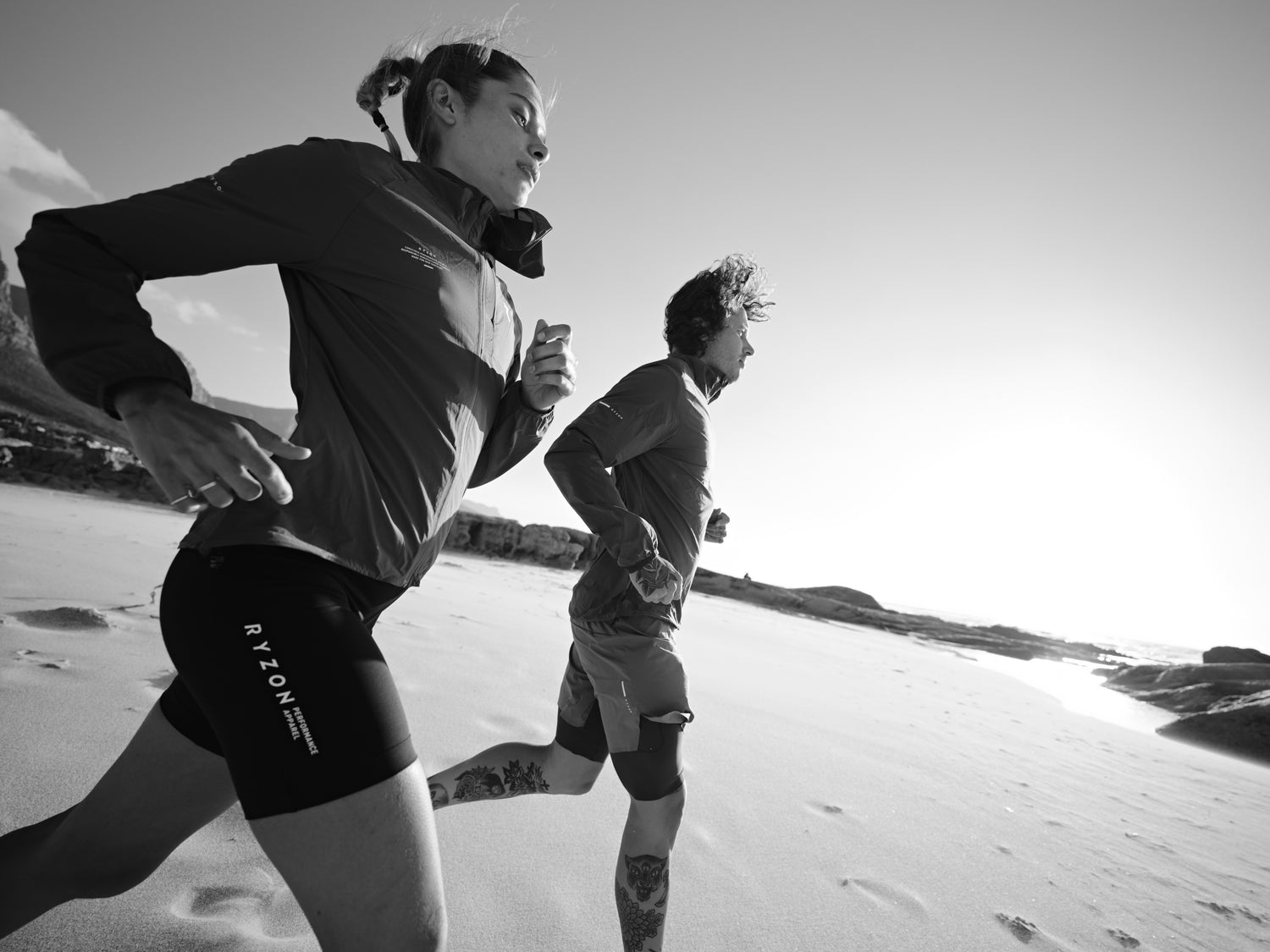Half Marathon/ Marathon Guide // Lesson 4 - Injury Prevention
Are you planning your first half marathon or even marathon? Our comprehensive guide will teach you everything you need to know about half marathons and marathons. Lesson 4 is all about injury prevention.
Lesson 3: Performance: Increasing Pace and Recovery
Why is injury prevention important?
Running is one of the most natural and effective sports—however, it can also lead to overexertion and injury if the body isn't properly prepared. Half marathon and marathon training, in particular, places a significant strain and challenge on your body. As discussed in the previous lessons, it's essential to pay close attention to your body and listen to its signals. Injuries can often lead to extended breaks from training, so it's important to take preventative measures to stay healthy and productive in the long term.

Common running injuries and how to avoid them
Causes of running injuries:
Many running injuries are caused by:
- Overload due to too rapid an increase in training volume or intensity
- Incorrect running technique or inefficient biomechanics
- Insufficient recovery between training sessions
- Weak muscles and lack of stability
- Poor footwear or wrong surfaces
- Lack of flexibility and lack of warm-up before training
Common injuries:
1. Runner's knee (patellofemoral pain syndrome)
Symptoms:
Pain around the kneecap, especially after long runs or downhill running
Prevention:
- Strengthening the thigh and hip muscles
- Improve running technique (shorter steps, upright posture)
- Wearing well-cushioned running shoes
- Reduction of hard surfaces such as asphalt
2. Shin splints
Symptoms:
Pain along the shin, especially after running
Prevention:
- Slow increase in training volume
- Strengthening the calf muscles
- Running on soft ground if possible
- Stretching the calf and shin muscles
- Wear suitable running shoes with sufficient cushioning
3. Achilles tendonitis
Symptoms:
Pain and stiffness in the Achilles tendon, especially in the morning
Prevention:
- Strengthening the calf muscles through eccentric training
- Regular stretching of the Achilles tendon
- Avoid abrupt changes in pace
- Adjust your running style to put less pressure on the tendon
4. Plantar fasciitis (heel pain)
Symptoms:
Sharp pain on the sole of the foot, especially in the morning or after rest
Prevention:
- Foot strengthening exercises (e.g. toe claws, balance exercises)
- Regular stretching of the soles of the feet and calves
- Wear suitable running shoes with good support
- Using fascia rolls to loosen the muscles of the soles of the feet
Exercises to strengthen muscles and joints
- Lunges: 3x10 repetitions per leg
- Single-leg squats: 3x8 repetitions per leg
- Bridge with leg raises: 3x10 repetitions to activate the posterior chain
- Step-ups on a raised platform: 3x12 repetitions per leg
- Calf raises (up and down on tiptoes): 3 x 15 repetitions
- Balance exercises on one leg: Hold each side for 30 seconds
- Toe claws and spreaders: To strengthen the foot muscles
- Jump rope exercises for better foot and ankle stability
- Calf stretch on the wall: 3x30 seconds per leg
- Quadriceps stretch: 3x30 seconds per leg
- Hip flexor stretch: 3x30 seconds per side
- Hamstring stretch (back of leg): 3x30 seconds per leg
- Fascia rolling massage for calves and thighs
Recreational measures and regeneration
- Proper nutrition: Protein-rich food for muscle regeneration, carbohydrates for energy restoration
- Adequate sleep: At least 7-9 hours for optimal recovery
- Active regeneration: Light stretching, yoga or easy cycling to recover the muscles
- Regular massage or fascia roll: To loosen tense muscles
- Ice and heat treatments: Applicable for acute pain or muscle tension
Conclusion
Regular strength training and targeted recovery are essential for injury prevention. Make sure to increase your training gradually, develop good running technique, and give your body enough time to recover. Nutrition, sleep, and targeted recovery measures also play an important role in sustained performance.
With these measures, you will stay injury-free in the long term and be able to structure your running training effectively!
Next lesson: Community

